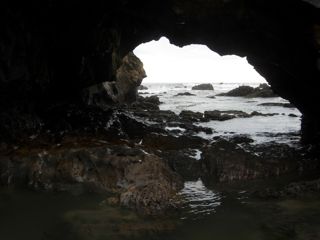
On our way to Cambria we stopped for a low tide to check out a sea cave at Shelter Cove, between Pismo Beach and Shell Beach.
| 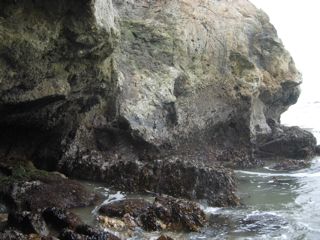
My students and I are studying the mixture of northern and southern finger limpets corresponding with different microhabitats here, such as shaded or exposed to sunlight, tidal height, and on rocks versus on goosenect barnacles.
| 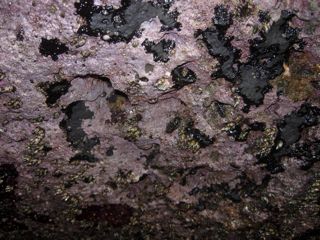
Another student and I are studying the genetics and reproduction of a tiny brooding chiton that lives on the roof of this sea cave: Cyanoplax caverna. There are possibly some of this species in this image but more likely one will see the much larger species, Nuttallina californica.
|

-
| 
Zonation patterns on a vertical wall inside the cave.
| 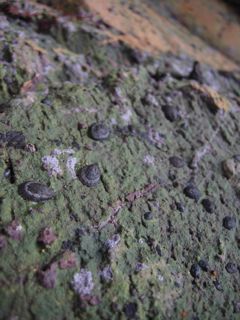
Finger limpets (Lottia digitalis or L. austrodigitalis)
|
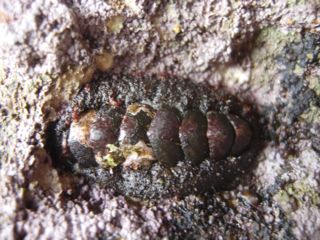
Nuttallina californica
| 
-
| 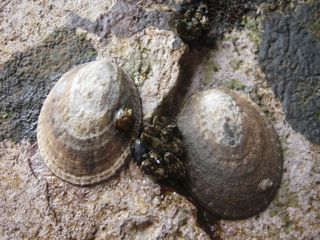
-
|
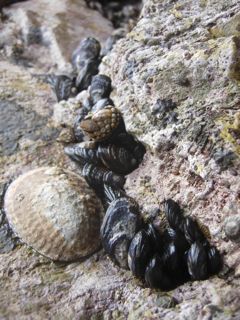
-
| 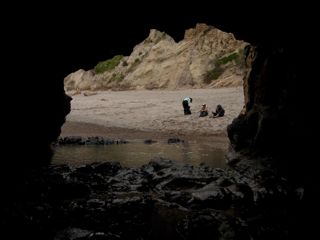
-
| 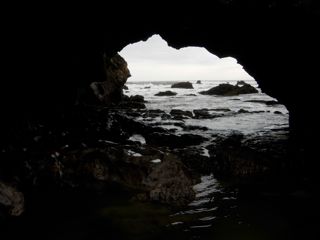
-
|
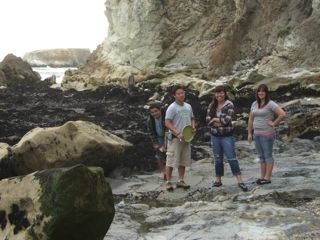
-
| 
This boy's discovery of a monkeyface prickleback (Cebidichthys violaceus) was popular with my students.
| 
-
|
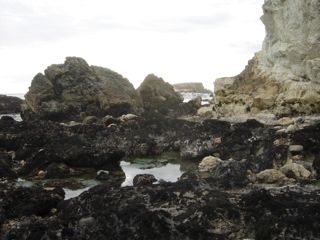
-
| 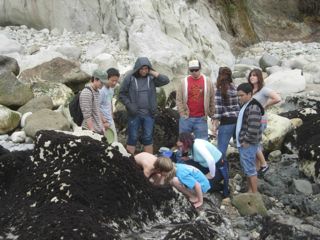
-
| 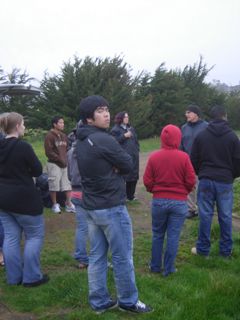
-
|

-
| 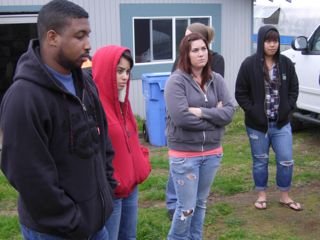
-
| 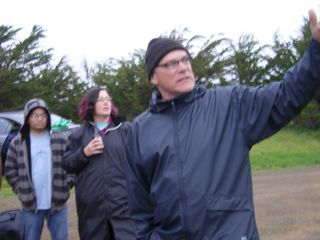
The Reserve manager, Don, introduced us to the history and natural history of University of California's Rancho Marino Reserve.
|
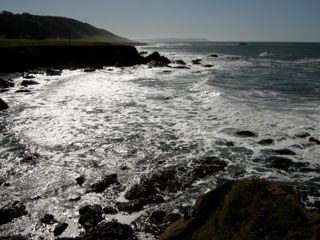
We had a great view of impressive 12-15 foot swells.
| 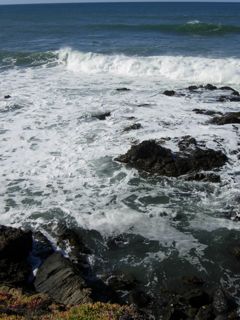
-
| 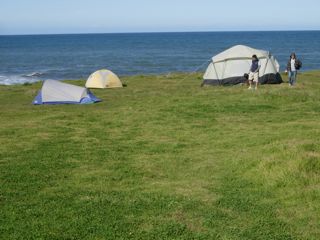
Tent campers on the bluff.
|

In the morning we visited California's largest colony of northern elephant seals, near San Simeon.
| 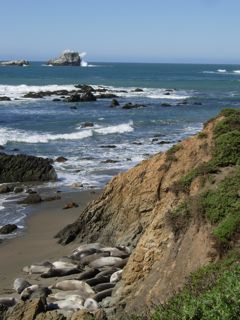
-
| 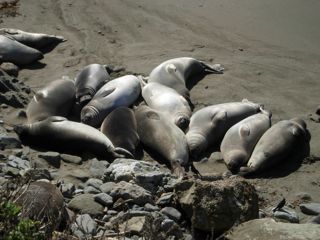
The female and many male adults have already left for their deep ocean fishing life and soon these pups will need to teach themselves to swim and will eventually fish on their own.
|
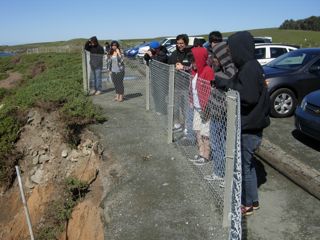
-
| 
-
| 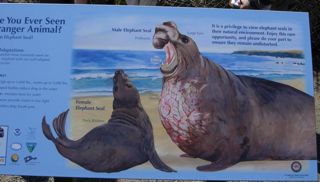
-
|

-
| 
-
| 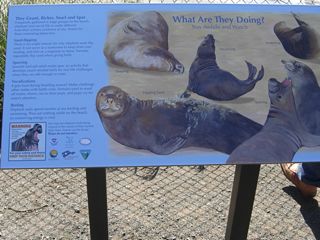
-
|
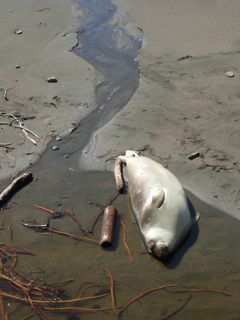
-
| 
-
| 
-
|
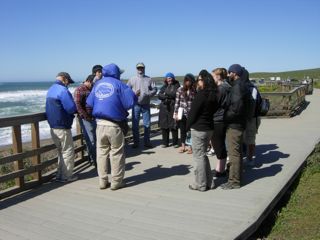
-
| 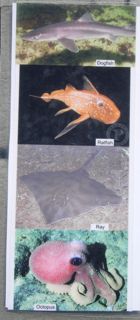
Some of an elephant seal's food items - a male can dive a mile deep and can be underwater for about an hour without breathing.
| 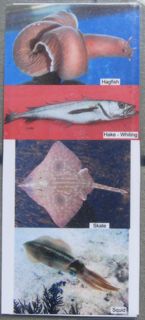
-
|
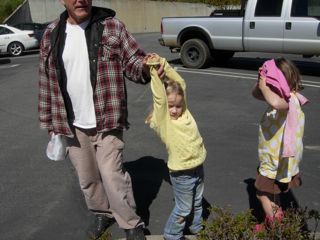
Stella and Carla in town.
| 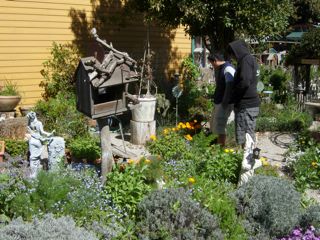
Visiting the fairy garden behind Heart's Ease in Cambria.
| 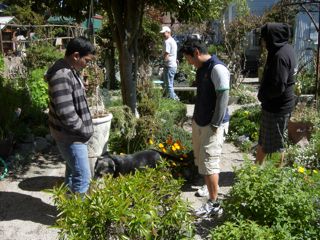
-
|

-
| 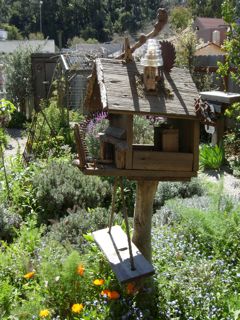
-
| 
A new fairy kingdom under construction.
|
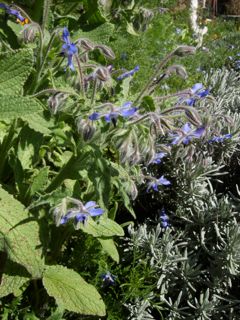
-
| 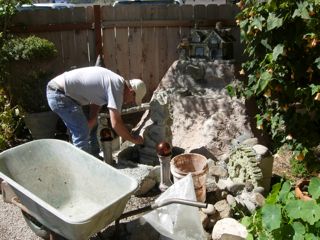
-
| 
-
|

-
| 
-
| 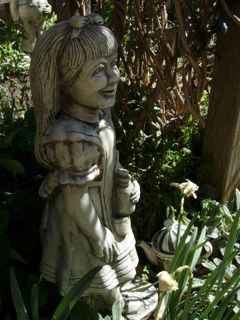
-
|

-
| 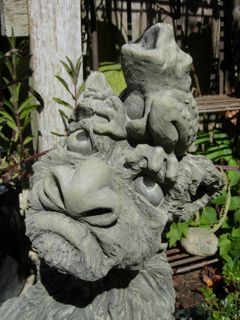
-
| 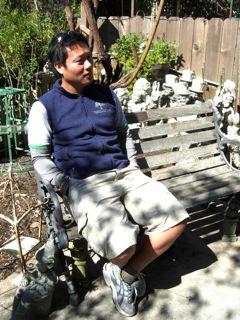
-
|

-
| 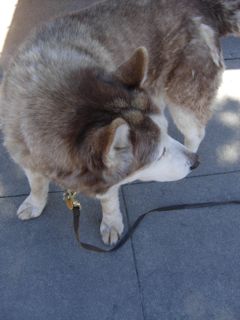
-
| 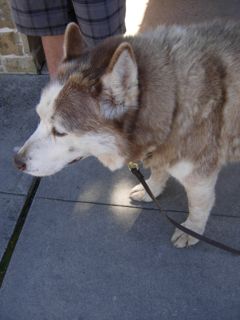
-
|
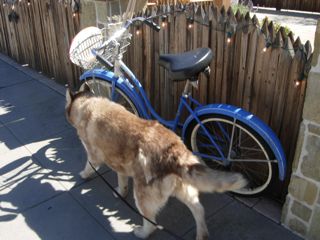
-
| 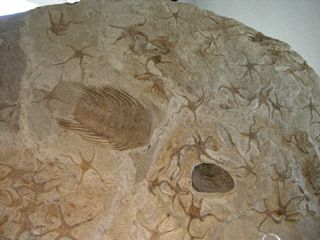
In the fossil and gem shop: trilobites and "starfish" (unidentified)
| 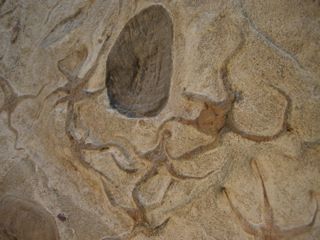
-
|

-
| 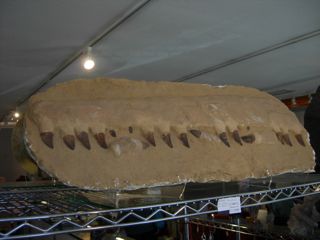
A mosasaur jaw
| 
-
|
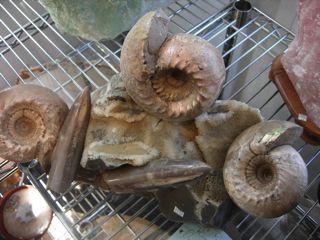
-
| 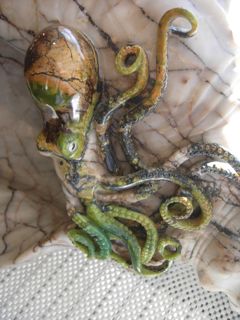
-
| 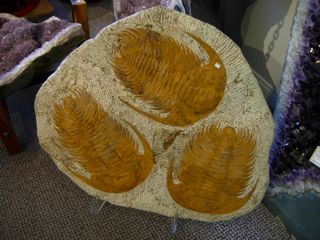
Very large trilobites
|
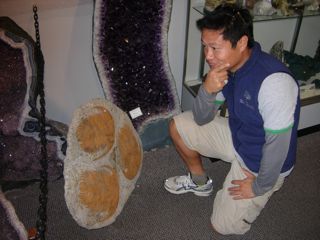
-
| 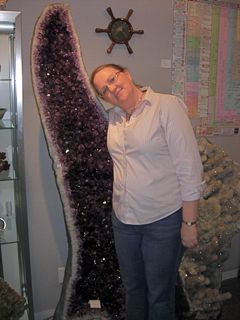
impressive amethysts
| 
Moonstones, here scattered around the jewelry, are common on Moonstone Beach in Cambria.
|

-
| 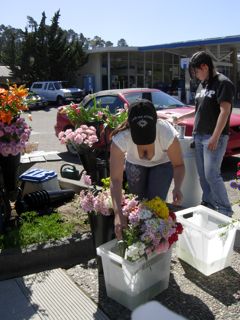
-
| 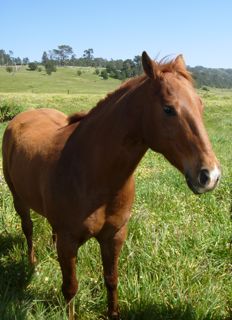
-
|
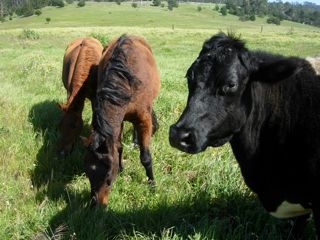
-
| 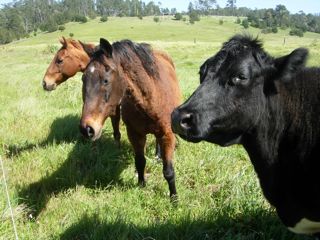
Red, Trouble, and Bertha (L to R)
| 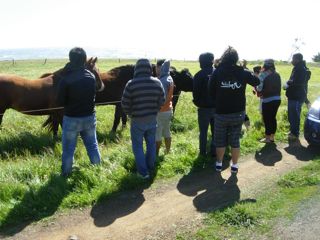
-
|
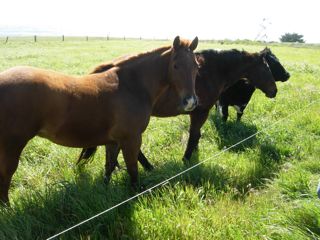
-
| 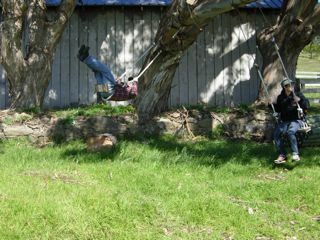
-
| 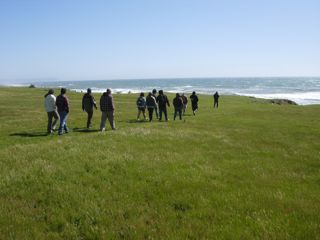
Time for low tide.
|
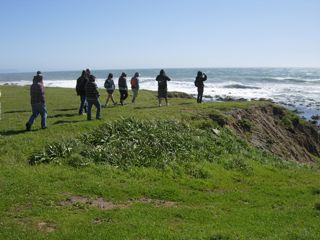
-
| 
-
| 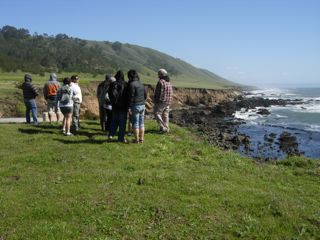
-
|
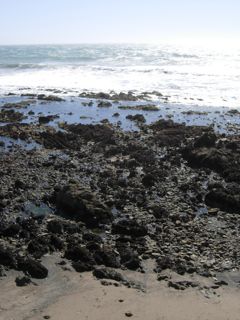
-
| 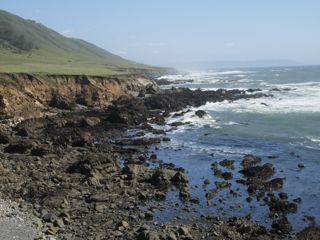
Sunny but cool and breezy.
| 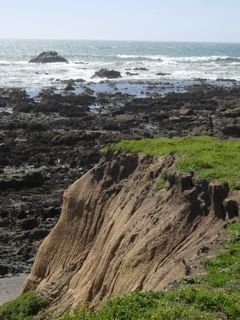
Dozens of California sea lions were on White Rock in the background, and harbor seals were hanging out on more shoreward rocks.
|
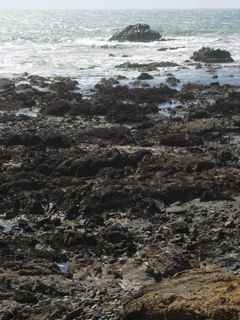
-
| 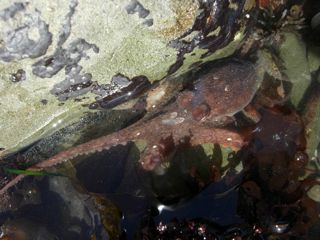
An upset red octopus (Octopus rubescens) inked perhaps ten times.
| 
-
|
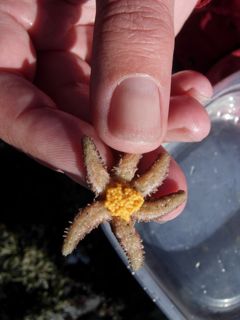
A brooding female Leptasterias cf. hexactis
| 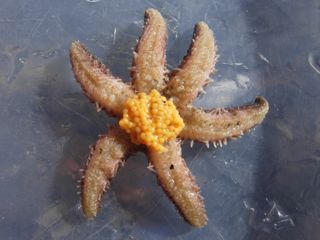
The embryos of both this female and the different brooder below appeared at a fairly early stage of development.
| 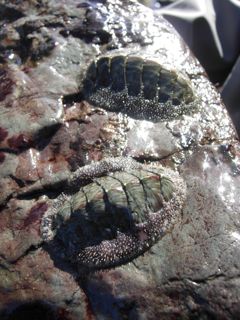
Mopalia lignosa (woody chitons)
|

-
| 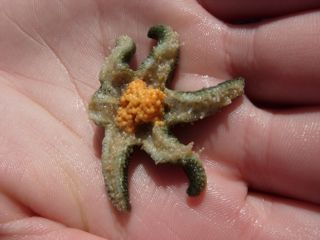
-
| 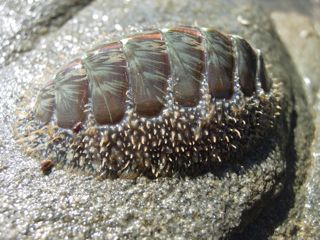
-
|
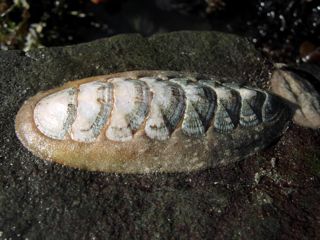
Heath's chiton (Stenoplax heathiana)
| 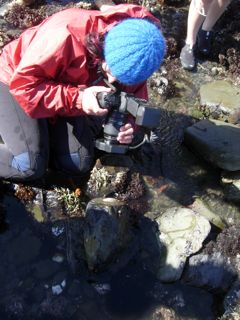
Brenna was along on our field trip again, taking amazing close-ups as usual.
| 
A particularly striking Anthopleura sola (sunburst anemone)
|
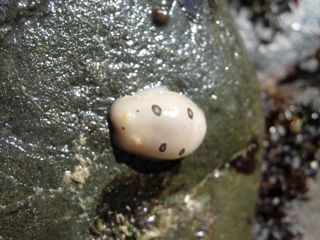
Diaulula sandiegensis is a dorid nudibranch (Gastropoda: Nudibranchia: Dorididae), one of the most common nudibranchs on our coast. It is sometimes called the leopard nudibranch, or ringed nudibranch.
| 
Romaleon antennarium (Pacific or California rock crab; formerly Cancer antennarius)
| 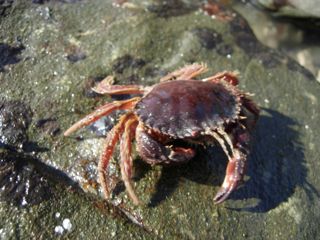
-
|
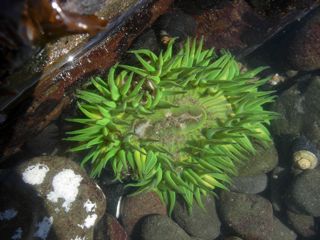
-
| 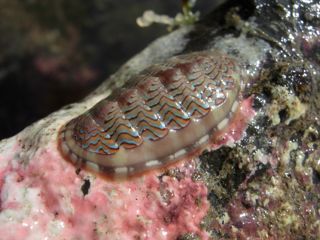
Loki's lined chiton (Tonicella lokii) feeds on encrusting coralline algae. It is more common than a more northern lined chiton, T. lineata (see below), in this part of central California.
| 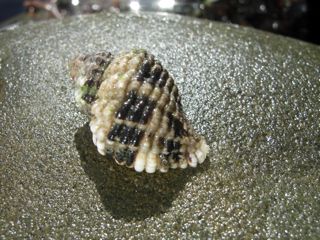
Ocinebrina circumtexta (circled rock snail) appeared to be the most common carnivorous snail we saw in the intertidal.
|
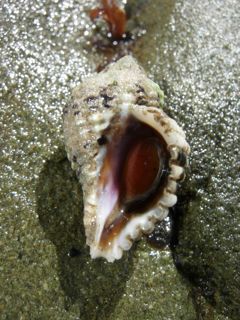
O. circumtexta (aperature)
| 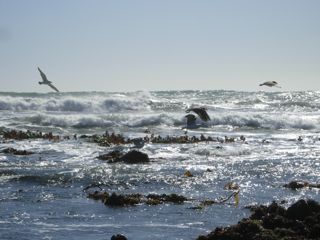
-
| 
Top: juvenile Stenoplax heathiana (Heath's chiton); Bottom: Leptochiton rugatus (red footed or dwarf chiton). Note how L. rugatus deforms its posterior girdle, probably having to do with the circulation of seawater past its posterior gills (here on top). I call this the "angel posture."
|
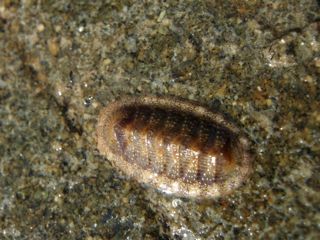
Tentative: Lepidozona mertensii, which was less common than its congener, L. cooperi
| 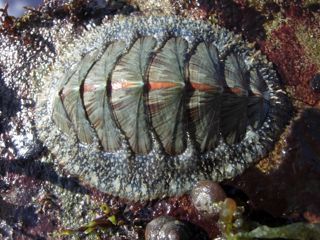
-
| 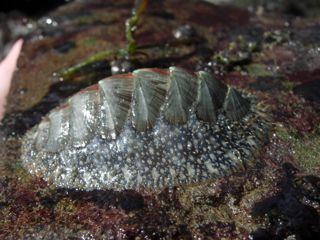
-
|
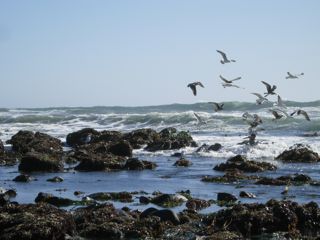
-
| 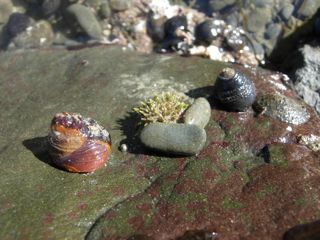
Underrock animals, L to R: Chlorostoma brunnea (brown turban snail); Strongylocentrotus purpuratus (juvenile purple urchin, covered by rocks); Chlorostoma funebralis (black turban snail); Lottia scutum (Pacific plate limpet)
| 
A very cryptic decorator crab in a seagrass root cluster
|
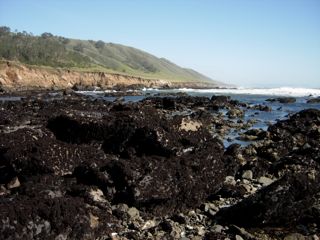
-
| 
Lottia scutum (Pacific plate limpet)
| 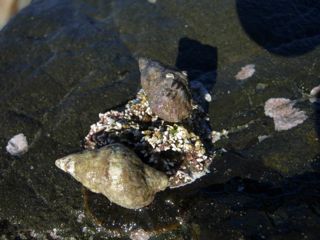
-
|
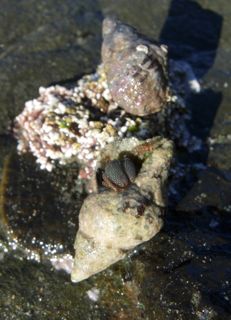
Hermit crabs (tentative: Pagurus samuelis)
| 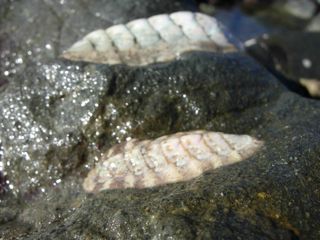
Stenoplax heathiana (Heath's chiton)
| 
-
|

Hermissenda crassicornis (opalescent sea slug)
| 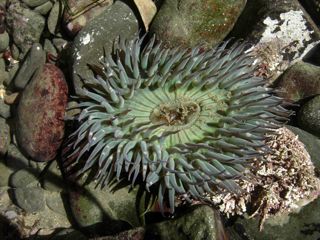
Anthopleura sola (sunburst anemone)
| 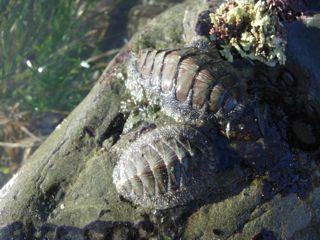
-
|

Tentative: Pugettia gracilis (graceful kelp crab) or P. producta (northern kelp crab)
| 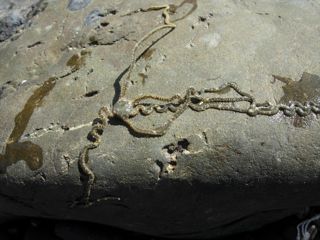
Still unidentified brittlestar
| 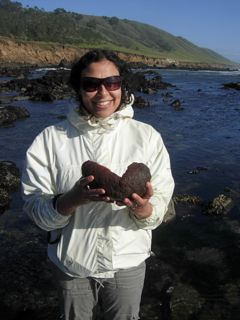
Candice found a giant Pacific gumboot chiton (Cryptochiton stelleri), the world's largest chiton species.
|
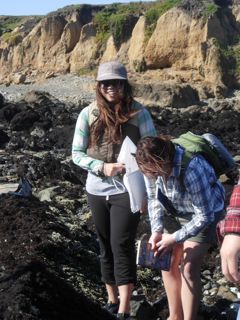
-
| 
-
| 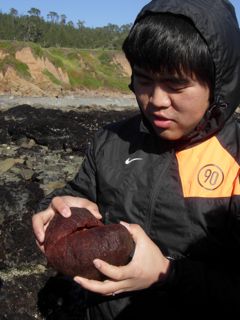
-
|
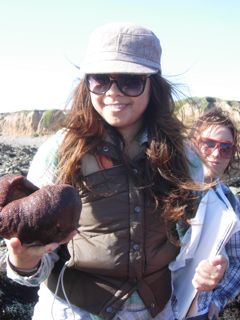
-
| 
Mopalia muscosa (mossy chiton) with bleached algae on its valves
| 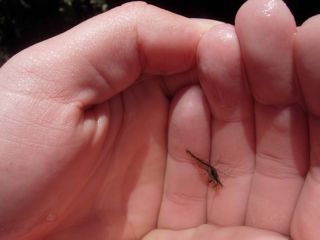
Tentative: Heptacarpus flexus (broken-back shrimp)
|
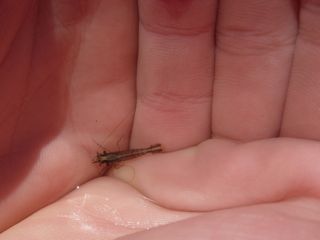
-
| 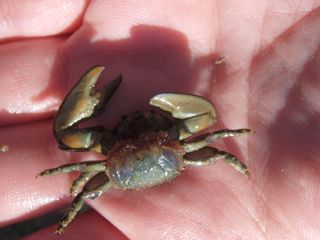
This porcelain crab is berried; she is brooding embryos under her abdomen. For a recent review of the species on this coast, see here.
| 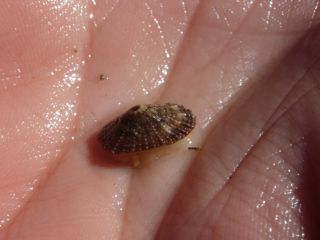
A keyhole limpet; possibly a juvenile Diodora aspera
|
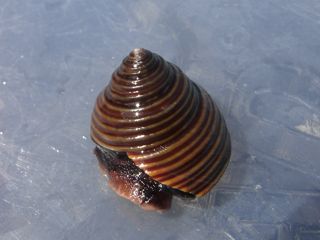
Calliastoma ligatum (blue top snail)
| 
-
| 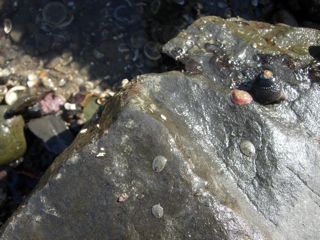
-
|
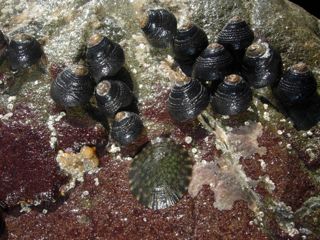
-
| 
Slipper limpets (Crepidula adunca or Garnota adunca) on black turban snails (Chlorostoma funebralis); slipper limpets are suspension feeders, feeding with their gill.
| 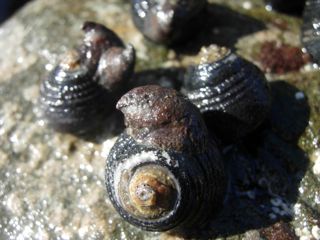
-
|

Lottia scutum (Pacific plate limpet)
| 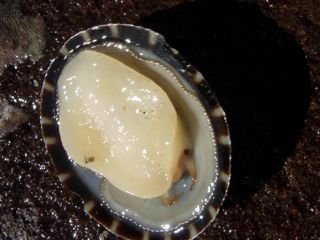
L. scutum can be recognized by its brown cephalic tentacles, with whitish coloration otherwise.
| 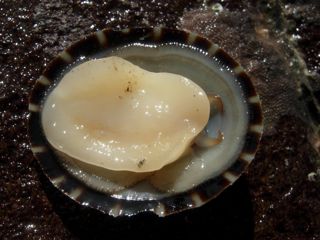
-
|
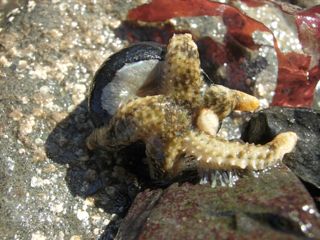
A small seastar was apparently preying on a black turban snail.
| 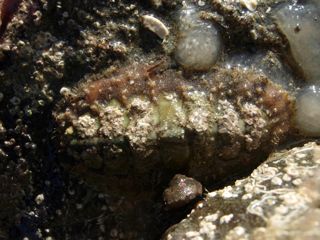
Mopalia ciliata
| 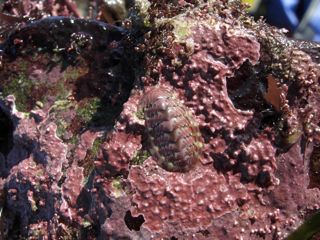
Tonicella lineata (northern lined chiton)
|
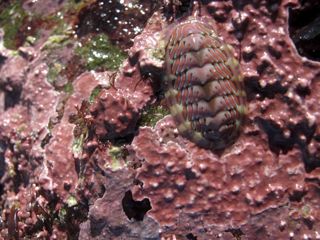
-
| 
Southern shield limpet, Lottia "pelta", under the rockweed, Silvetia compressa
| 
Hartweg's chiton, Cyanoplax hartwegii, another grazer commonly under the rockweed, Silvetia compressa
|
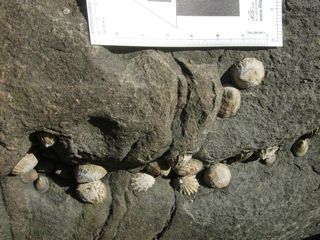
Extremely large southern or northern finger limpets (Lottia austrodigitalis or L. digitalis
| 
-
| 
Littorina keenae and Lottia scabra
|

-
| 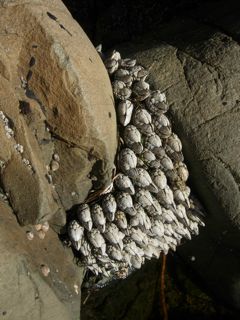
Pollicipes polymerus (gooseneck barnacles)
| 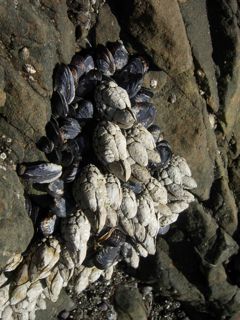
-
|
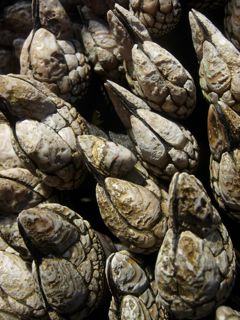
Can you find a barnacle morph finger limpet (Lottia digitalis or L. austrodigitalis) well camouflaged on each of these three images of goosenect barnacle clusters?
| 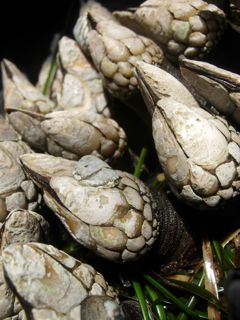
-
| 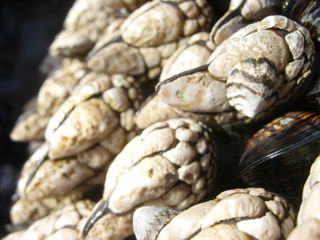
-
|
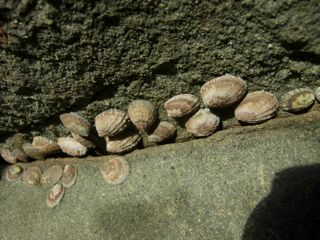
-
| 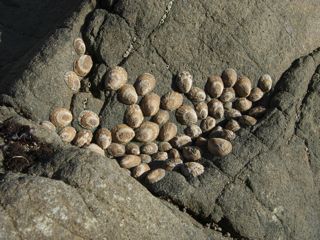
Northern or southern finger limpets (Lottia austrodigitalis or L. digitalis) are found higher in the intertidal than other limpet species, often clustered like these on a vertical wall face where it would be difficult for a predatory shorebird to stand while knocking them off with its bill.
| 
-
|

-
| 
-
| 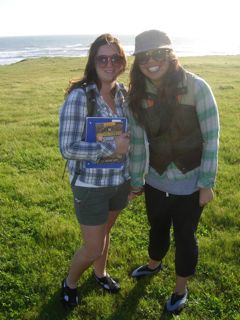
-
|

-
| 
-
| 
-
|
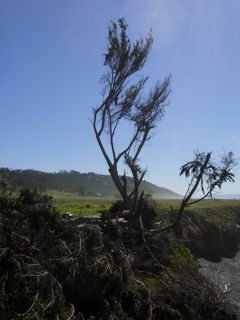
-
| 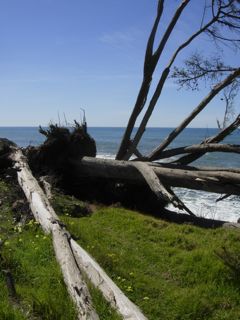
This Monterey cypress had fallen down since last year's visit.
| 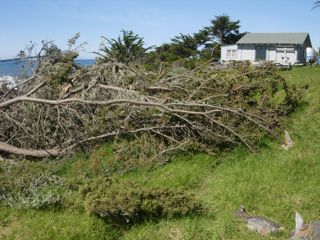
-
|
 Under Construction!
Under Construction! Under Construction!
Under Construction!